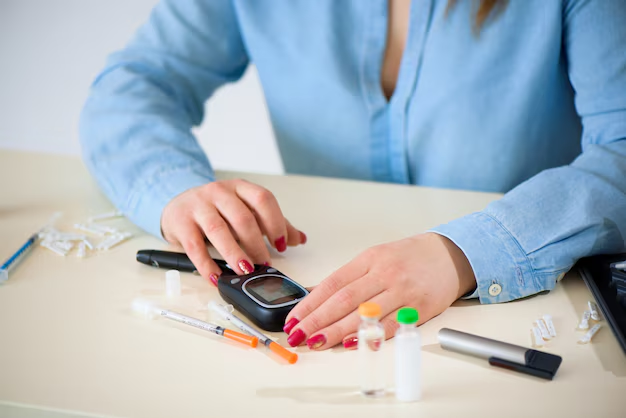Understanding Prediabetes: What You Need to Know
When you hear the term prediabetes, it might sound concerning—and rightfully so. Millions of people are affected by this condition, which indicates higher-than-normal blood sugar levels that are not yet high enough to be classified as type 2 diabetes. But what does this really mean, and how can those coping with prediabetes take proactive steps to maintain their health? Let's dive in.
What is Prediabetes?
Prediabetes is essentially a warning sign that your body is on the cusp of developing type 2 diabetes. It occurs when your blood sugar levels are higher than normal but not high enough for a diabetes diagnosis. Over 80 million Americans are estimated to be prediabetic, many of whom may not even be aware. This condition doesn’t manifest with obvious symptoms, making awareness and regular screenings crucial for early intervention.
Key Indicators of Prediabetes:
- Impaired fasting glucose: Blood sugar levels ranging from 100 to 125 mg/dL after an overnight fast.
- Impaired glucose tolerance: Blood sugar levels from 140 to 199 mg/dL two hours after consuming a glucose-rich drink.
- Elevated Hemoglobin A1c: A measure reflecting average blood sugar levels over three months, indicating prediabetes at levels between 5.7% and 6.4%.
Why It Matters
The significance of recognizing and managing prediabetes lies in the potential health complications if left unchecked—chief among them being the progression to type 2 diabetes. With this progression, risks increase for heart disease, stroke, kidney disease, and more. Fortunately, lifestyle changes like improved diet and regular physical activity are highly effective in reversing prediabetes or at least delaying its progression.
Financial and Educational Support Avenues
The challenge of managing a health condition like prediabetes is often compounded by the financial implications. However, there are various resources and programs available that can ease the burden:
Government Aid Programs
For many, government programs can offer critical support. Medicaid and Medicare often cover diabetes screenings and some educational programs focused on lifestyle intervention. Check eligibility as it varies by state.
Financial Assistance for Healthcare
- Community Health Programs: These programs often offer free or low-cost screenings and lifestyle intervention classes.
- Non-Profit Organizations: Groups like the American Diabetes Association provide resources and sometimes financial support for those struggling with costs.
Educational Grants and Resources
There is no substitute for education when it comes to managing and understanding prediabetes. Nutritionists, diabetes educators, and fitness experts can all provide valuable guidance.
- Employer Wellness Programs: Many employers offer wellness programs that include health screening and fitness classes.
- Online Courses: Platforms like Coursera or Khan Academy provide free or low-cost courses on nutrition and health that can be vital resources for managing prediabetes.
Credit Card Solutions for Health Expenses
If healthcare costs are overwhelming, some credit cards offer health-specific spending programs with lower interest rates or points that can be converted to discounts or cash back on medical expenses.
Proactive Steps
Preventative action is undeniably the best approach to managing prediabetes. Here’s a roadmap:
- Diet Adjustments: Prioritize whole grains, vegetables, fruits, and lean proteins while reducing sugar and processed foods.
- Regular Exercise: Aim for at least 150 minutes of moderate physical activity per week.
- Weight Management: Losing just 5-10% of body weight can significantly lower the risk of developing type 2 diabetes.
Financial Support and Educational Resources
📌 Medicare/Medicaid: Covers diabetes screening
📌 Community Health Centers: Low-cost classes and screenings
📌 American Diabetes Association: Grants and assistance programs
📌 Employer Wellness Plans: Offers screenings and fitness incentives
📌 Online Courses: Nutrition and health management
Understanding prediabetes is the first step. With awareness and the right resources, the path to healthy living becomes clearer and more attainable. Taking advantage of available financial and educational tools will empower anyone facing this challenge to live a healthier life and potentially prevent the onset of more severe health conditions.
